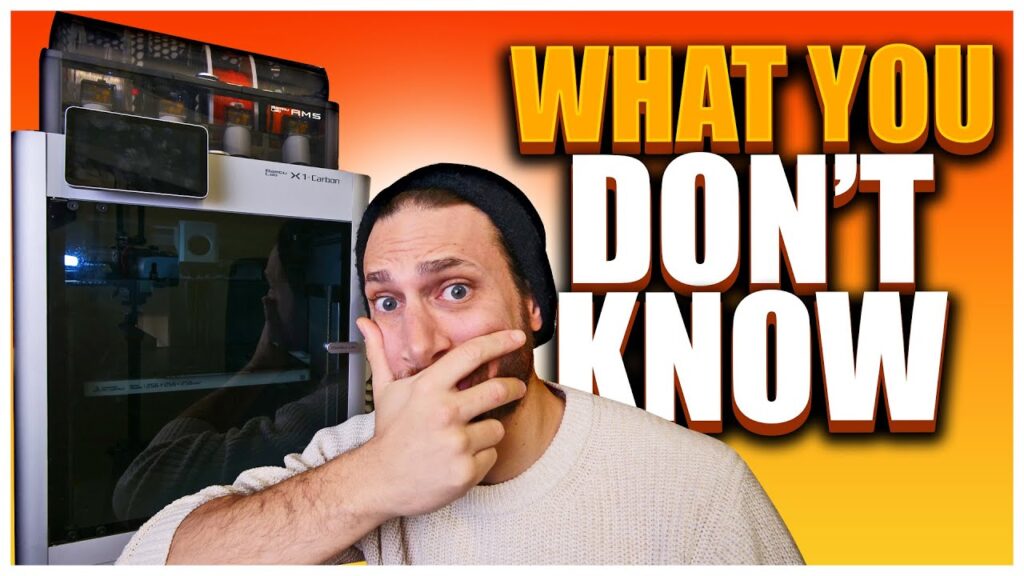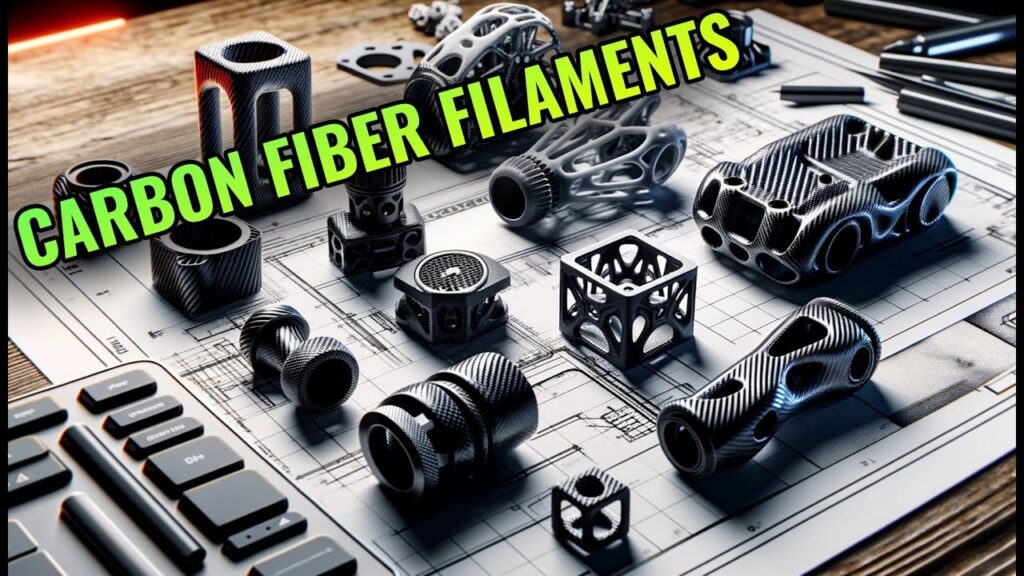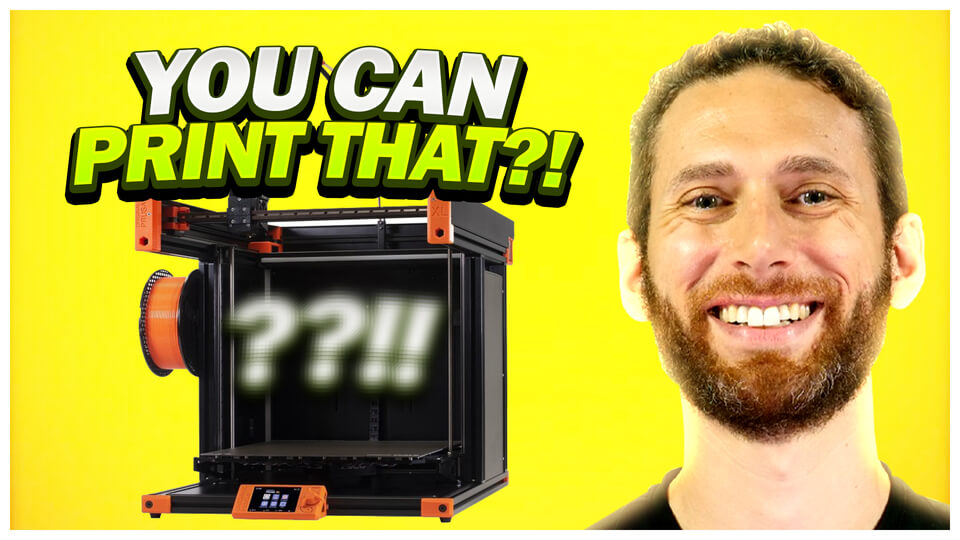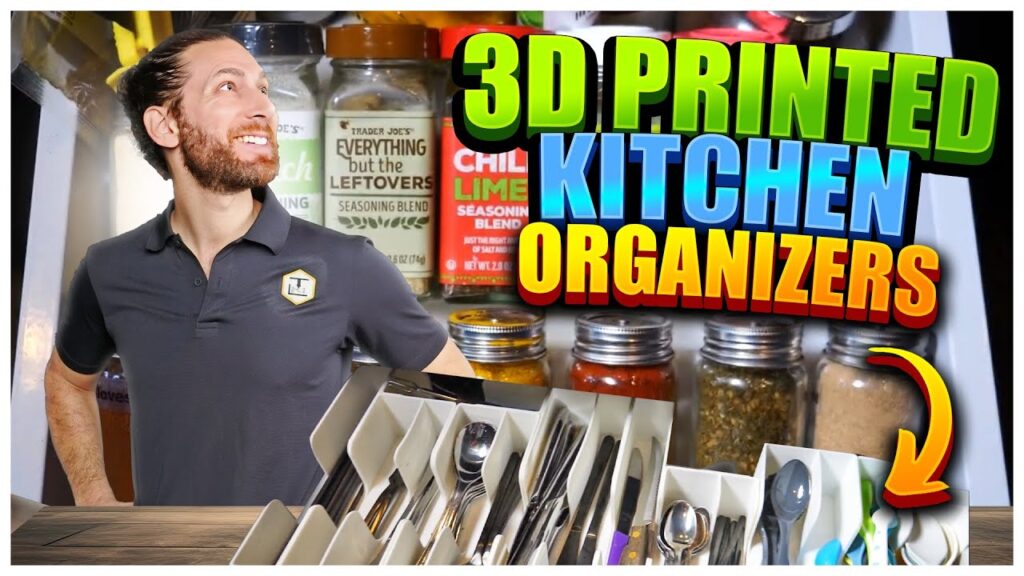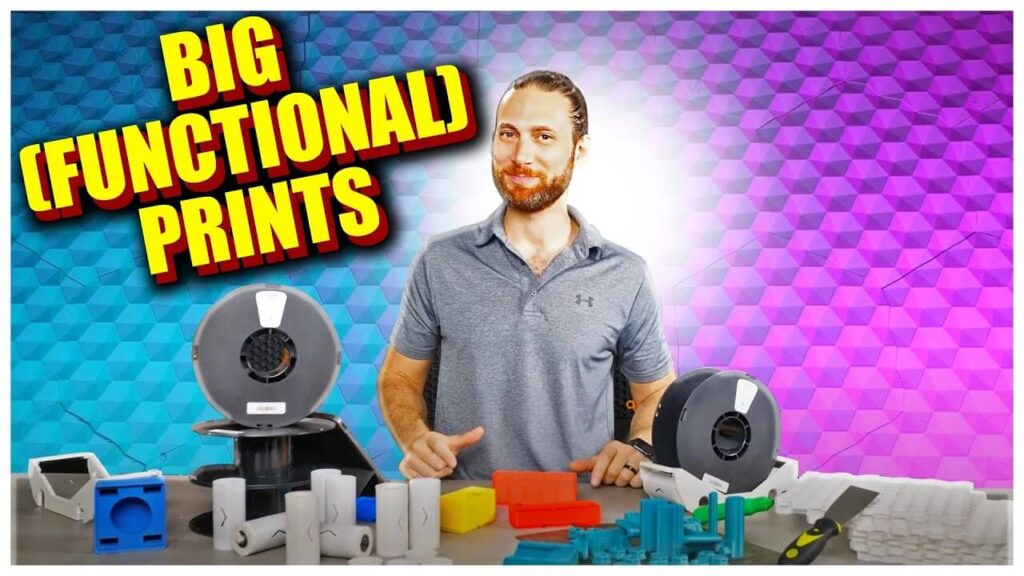In this article, I will be exploring 7 lesser-known, unique 3D printer filaments for YOU to try out.
So whether you’re a relative beginner or a veteran 3D printing enthusiast, stay tuned, because I can guarantee you’ll discover something new.
Introduction
Recently, I was overwhelmed by the viral success of my “advanced” filaments video, the second in my series of videos teaching you about the different types of filament, what they’re good for, and what to watch out for.
In that video, you guys overwhelmingly requested ANOTHER list in the series, going into some of the rarer, more esoteric filaments – but filaments which can still be printed at home, using a desktop 3D printer.
This is that list, and as with each of the previous guides, the format goes like this:
We’ll learn about the material characteristics of each filament, the strengths and weaknesses of printing with it, it’s printablity on consumer-grade 3D printers, and how it compares to other filaments.
Then, once we understand those elements of each filament, we’ll look at ideal use scenarios and examples, so that you have a better understanding of exactly what you can and should print with each of these filaments.
Here we go!
PEBA
To kick us off, let’s talk about Polyether Block Amide, commonly known as PEBA. You may have never even heard of it – I certainly hadn’t before I began researching for this video – but this filament is a hidden gem in the world of 3D printing, offering a remarkable blend of flexibility, strength, and durability.
Characteristics: PEBA stands out for its exceptional flexibility and elasticity, making it akin to rubber in its physical properties. It exhibits high resistance to wear and tear, and boasts excellent chemical resistance, which is not commonly found in more popular filaments like PLA or ABS.
One of the key features of PEBA is its ability to return to its original shape after bending or stretching, showcasing superior elastomeric properties.
Strengths and Weaknesses: The major strength of PEBA lies in its flexibility and durability, which opens up opportunities for printing parts that require significant bending or stretching without damage. It also excels in energy return, a unique property that I’m going to cover in a moment when we compare it to other filaments.
Additionally, unlike pretty much any other filament I’ve come across, PEBA can maintain it’s mechanical properties in extremely hot or extremely cold temperatures – even as low as -60 Degrees celsius.
As for weaknesses, PEBA is quite hygroscropic, which can be a pain to deal with. Additionally, PEBA’s somewhat niche application range means it might not be as widely used as more general-purpose filaments, so it is not only more costly, but you also aren’t likely to find ready-made profiles for it in your slicer.
Printability: Like all flexible filaments, PEBA can be a bit of a pain if there is play in your extruder, or if you don’t have a direct drive setting. And, like all flexible filaments, you’ll need to slow things down to print it properly.
You will probably have the most success printing it at 230 to 260 Degrees Celsius, and a bed temperature of 70 to 90 degrees celsius. Some brands do recommend using a heated chamber, but it’s not strictly necessary.
Honestly, though, printing this stuff was pretty easy, and I was actually shocked that my very first print turned out beautifully, with no issues whatsoever.
Comparison with Other Filaments: PEBA is more flexible than TPU (Thermoplastic Polyurethane), another popular flexible filament that we covered in the first video in this series, but offers better energy return and abrasion resistance.
In layman’s terms, this means that you not only get more durability, but also much more “bounce for the ounce”.
But to demonstrate that, I printed out solid infill balls of TPU, PEBA, and Chinchilla, which we’re going to be covering in a minute, then swung them against a hard surface.
Whereas TPU tends to get very hard once it reaches a certain thickness, PEBA and Chinchilla which we’ll cover in a second retain their flexibility even at greater thicknesses.
And once again, PEBA really outshines other flexible filaments in it’s resistance to high and low temperatures, as well as chemicals. But at 70 Euros for a 500g spool, this stuff is extremely pricey – and is best reserved for applications where it’s properties are REALLY needed.
Ideal Use Scenarios: PEBA is ideal for applications that demand high flexibility, durability, or superior energy return.
It’s perfect for printing parts like gaskets, tubes, seals, and flexible hinges – particularly if those parts are going to be subjected to chemicals or extreme temperatures.
But because of it’s energy return, it also really excels for creating wearable items, sports equipment, and specialized tools that need to withstand repeated flexing and stretching.
The best example of this, in my mind, is a shoe or a shoe sole, which needs to have great energy return, superior flexibility, and of course, abrasion resistance.
That’s why, in the medical field, PEBA is used for printing custom orthopedic insoles and other flexible medical devices.
By the way, I’ve been toying with the idea of trying to design my own, custom, barefoot-style shoes, and printing them out of PEBA… so let me know in the comments below if that’s a video you’d be interested in watching.
Conclusion: If you’ve experimented with PEBA in your 3D printing projects, I’m eager to hear about your experiences. What innovative uses have you found for this versatile and flexible material?
PC-CF
Up next, let’s look at PC-CF, or Polycarbonate Carbon Fiber, which you guys overwhelmingly responded was missing from my previous video on “advanced” filaments. PC-CF filament combines the incredibly strength and heat resistance of polycarbonate with the rigidity and durability of carbon fiber, making it an exceptional choice for demanding applications.
Characteristics: PC-CF filament is renowned for its high strength-to-weight ratio, thanks to the carbon fiber reinforcement. Polycarbonate, as you know, is incredibly strong by itself.
But by adding Carbon Fiber, we can not only enhance its structural integrity but also reduce the overall weight of the printed parts.
Like all Polycarbonate, it exhibits excellent thermal resistance and maintains its properties under a wide range of temperatures – but it exceeds standard polycarbonate, due to the addition of carbon fibers, making it superior to many standard filaments in terms of heat tolerance.
Strengths and Weaknesses: The primary strength of PC-CF lies in its robustness and heat resistance, making it suitable for parts that will be exposed to high temperatures or mechanical stress.
However, the rigidity of PC-CF can be a drawback for applications requiring flexibility or impact resistance. As with all filaments, increased rigidity comes at a cost to impact resistance.
Finally, the abrasive nature of carbon fibers can lead to increased wear on the printer’s nozzle, requiring special considerations like using a hardened steel nozzle. And of course, there’s the price. PC-CF routinely goes for $80-150 a kilo, so don’t waste it on something that would be just as good in another filament.
Comparison with Other Filaments: Compared to standard PC, PC-CF offers enhanced stiffness and dimensional stability due to the carbon fiber content – and giv en how prone to warping PolyCarbonate is, that’s a welcome improvement.
But what about comparing it to Carbon Fiber Nylon? Well, I like to think of it this way. Both have a lot of the same characteristics, but with PC-CF, you’re trading a little bit of durability and impact resistance for increased rigidity and heat resistance.
That is to say, PC-CF is going to be more rigid, better in high heat situations, but less shock absorption.
Printability of PC-CF Filament: Printing with PC-CF comes with its own set of challenges:
- Temperature Settings: It requires higher extrusion temperatures, typically around 260°C to 280°C, and a heated bed temperature of about 90°C to 110°C. This rules out a lot of lower-end desktop 3D printers.
- Heated Chamber: A heated chamber is highly recommended to prevent warping and to ensure dimensional accuracy, especially for larger prints… This rules out even more consumer 3d printers.
- Nozzle Consideration: Due to the abrasive nature of carbon fibers, a hardened steel nozzle is necessary to avoid rapid wear. No surprises there.
- Moisture Sensitivity: Similar to standard PC, PC-CF is hygroscopic and should be stored in a dry environment and possibly printed with a filament dryer to maintain quality.
Ideal Use Scenarios: PC-CF is ideal for functional parts that require high strength and rigidity, such as aerospace components, automotive parts, and mechanical gears. It’s also well-suited for prototyping functional parts that will be subjected to high temperatures or mechanical loads.
Conclusion: Have you had the chance to work with PC-CF filament in your 3D printing ventures? We’d love to hear about your experiences and the innovative ways you’ve utilized this high-performance material. Share your stories and tips in the comments below!
TPE & Chinchilla
Up next, let’s take a closer look at Chinchilla filament, a TPE (Thermoplastic Elastomer) based material produced by Ninjatek (Though most of what I say here will also apply to other brands of TPE, too). This particular filament by Ninjatek, though, is notable for its 75A Shore hardness, indicating a high degree of flexibility and elasticity.
Characteristics: Chinchilla filament stands out with its remarkable flexibility and soft-touch feel, making it ideal for prints requiring a rubber-like texture. Its 75A Shore hardness means it’s softer and more flexible than many other TPE or TPU (Thermoplastic Polyurethane) filaments.
This filament is designed to be stretchy and compressible, with excellent durability and resistance to abrasion. Holding it in your hand, you can’t help but be shocked at just how ductile and soft this stuff is. I kinda wanna print myself a mattress out of it, it’s so nice.
Strengths and Weaknesses: A major strength of Chinchilla filament is its capacity to create parts that can withstand bending, stretching, and compressing without losing their form or breaking. This makes it perfect for applications needing a soft, flexible material. Which is great, because Chinchilla brand TPE is actually rated safe for skin contact.
However, its softness can be a limitation for projects requiring rigidity or structural strength. Also, like many flexible filaments, it can be challenging to print due to its elasticity. Oh, also, at $104 a kilo, it’s not super affordable, But then again, none of the filaments on this list are bargain buys.
Comparison with Other Filaments: Chinchilla is softer and more flexible than many TPU filaments, which typically range in Shore hardness from 85A to 95A. While TPU offers a balance between flexibility and rigidity, Chinchilla leans more towards flexibility, making it more suitable for applications that require a softer, more rubber-like material.
Printability of Chinchilla Filament: To be honest, considering how flippity floppity this filament is, I was expecting it to be a NIGHTMARE to print.
But I threw it on the Voron with the same settings as PEBA, and I was SHOCKED that after some initial trouble loading it, it just… printed (at least until the filament path got obstructed on the other end of the bowden tube, at which point I cancelled and didn’t want to waste more of this precious filament on benchies.
It prints great at 240 Hot-End, 75 heated bed, nice and slow. Nothing special if you’re used to printing flexibles. I don’t know if this is because the ClockWork 2 is a fantastic extruder, or what, but this stuff was surprisingly pleasant to work with.
Despite the fact that it’s SO smooshy, you can actually see it flex under the nozzle, the print still turned out AMAZING. I definitely want to use this stuff more often.
Ideal Use Scenarios: Chinchilla filament is ideal for creating objects that require a soft, flexible material, such as grips, gaskets, wearable items, and flexible hinges.
Its ability to absorb impacts and resist abrasion also makes it suitable for protective gear and parts that are subject to frequent handling or movement.
And because of it’s safety rating for contact with skin, mixed with it’s pleasant, almost fuzzy finish, I’d recommend using it for things like handlebar or tool grips, or anything that is going to be touched a lot.
Personally, because it’s so squishy and pleasant, I’m going to use it to make a foam-like cutout for my stream deck’s rugged case, to protect the buttons and dials when I transport it. Though, come to think of it, considering how expensive it is… maybe i’ll just cut out some foam.
Conclusion: If you’ve experimented with Chinchilla filament in your 3D printing projects, please share your insights. What applications have you found to be best suited for this uniquely flexible material? Your experiences and tips are invaluable to our community!
PVB
Up next, let’s talk about Polyvinyl Butyral, or PVB. This filament is gaining popularity for its unique properties that offer both aesthetic and functional benefits in 3D printing.
Characteristics: PVB is known for its excellent transparency and smooth surface finish, making it an ideal choice for prints where clarity and aesthetics are paramount. It also boasts good impact resistance and flexibility, providing a balance between strength and malleability.
One of the standout features of PVB is its compatibility with easier and safer post-processing techniques like alcohol smoothing, which can significantly enhance the final appearance of the print.
Yes, you can of course smooth ABS or ASA, but you need to do it with acetone, which is both more difficult and more dangerous to breathe in. Alcohol, on the other hand, is safer and easier to work with for vapor smoothing.
Strengths and Weaknesses: The main strengths of PVB include its superior surface finish, transparency, and the ease of post-processing. It’s also pretty affordable, at $25 for a 500g spool. However, its flexibility might be a drawback for applications requiring rigid structural components. PVB’s sensitivity to moisture is another factor to consider, as it requires careful storage and handling. Also, it stinks like a combination of chemicals and old cheese – even when you’re not melting it.
Comparison with Other Filaments: Compared to more common filaments like PLA and ABS, PVB offers a smoother finish and better transparency. While it doesn’t have the high-temperature resistance of something like ABS, it compensates with better aesthetic qualities and less brittleness. Unlike more popular transparent filaments like PETG, PVB is easier to smooth and finish, making it more suitable for detailed and aesthetic projects.
Printability of PVB Filament: PVB is relatively user-friendly in terms of printability:
- Temperature Settings: PVB prints best at extruder temperatures of about 220°C to 250°C, with a heated bed temperature around 60°C to 80°C.
- Printing Environment: Unlike materials that require a heated chamber, PVB can be printed on standard consumer 3D printers.
- Moisture Sensitivity: Due to its hygroscopic nature, storing PVB in a dry environment or using a filament dryer is recommended to maintain its printing quality… especially considering that aesthetics is one of the main selling points of this filament.
Ideal Use Scenarios: PVB is particularly well-suited for projects where aesthetics are crucial. This includes things like vases, where clarity and a smooth finish are desired. Its ability to undergo alcohol smoothing makes it a popular choice for artistic and decorative items, as well as for prototypes that need a high-quality surface finish.
Personally, I almost never use PVB, but if I do, it’s only for a vase, or something that I don’t want people to know is 3D Printed.
Conclusion: Have you worked with PVB in your 3D printing projects? I’d be thrilled to hear about how you’ve utilized its unique properties. Share your experiences and any tips you have for working with this versatile filament in the comments below!
PP
Continuing our journey through the lesser-known 3D printing materials, let’s now explore Polypropylene, commonly known as PP. This filament is renowned for its unique combination of flexibility, chemical resistance, and durability, making it a valuable asset in both hobbyist and industrial 3D printing applications.
Characteristics: PP filament is considered a ‘flexible’ filament, but it’s important to clarify that its type of flexibility is different from what you might find in traditional flexible filaments like TPU.
PP’s flexibility is characterized by its ability to bend and flex without breaking, rather than the elastic, rubber-like stretchability of TPU. This makes PP excellent for applications requiring parts to withstand repeated bending or flexing motions without deforming.
To better understand this, think about a car bumper – which is often made out of PolyPropylene or the similar PolyUrethane. You can’t pull on it and stretch it out, but if you bump it, it will flex, then pop back into place – thousands of times if necessary. This is called fatigue resistance, and it, along with excellent chemical resistance, is one of the key features that differentiate PolyPropylene.
Additionally, PP has a low moisture absorption rate, enhancing its durability in various environments. At 35 euros for a 500g spool, it’s not cheap, but it won’t break the bank.
Strengths and Weaknesses: The main strength of PP lies in its resistance to chemicals, fatigue, and its ability to retain its shape after bending. However, these same properties can be challenging during printing; PP’s flexibility and low surface energy make adhesion to the print bed tricky. Also, PP’s semi-crystalline nature can lead to warping and shrinking during cooling.
Comparison with Other Filaments: Compared to flexible filaments like TPU, PP offers a unique balance of flexibility and chemical resistance, though it’s less elastic. At the time of this recording, I haven’t been able to get my hands on a roll… but I’m going to try to before this video goes live.
Printability of PP Filament: Printing with PP requires attention to specific details:
- Temperature Settings: Extrusion temperatures for PP are typically around 220°C to 250°C. A heated bed, set to around 80°C to 100°C, can help with adhesion.
- Bed Adhesion: Bed adhesion can be an issue with PP filament, so using an adhesion agent or even painter’s tape may be necessary.
- Enclosure: While not always necessary, an enclosure can help maintain a stable temperature and reduce warping.
Ideal Use Scenarios: PP is ideal for parts that need to be resistant to chemicals and regular flexing. It’s perfect for creating containers, live hinges, automotive parts, or any component that will be exposed to harsh chemicals or needs to flex without breaking.
Personally, I would choose it specifically for live hinges – though considering it’s ability to take abuse and bounce back, it could also be great for printing toys or anything that is going to come into contact with little ones.
Conclusion: If you’ve used PP in your 3D printing projects, your insights and experiences would be greatly valued. What innovative uses have you found for this resilient and versatile material? Please share your thoughts and tips in the comments below!
CPE (HG100)
Now, let’s shift our focus to CPE, or Co-Polyester. In this video, I’m specifically testing CPE HG100 by Fillamentum, and it’s important to note that different brands may have different formulations, which may behave differently. Nonetheless, CPE filament is gaining attention for its excellent balance of properties, combining ease of printing with functional and aesthetic qualities.
Characteristics: CPE is, in many ways, quite similar to PETG. It stands out for its high impact resistance and dimensional stability. It is less prone to warping compared to materials like ABS, making it a more stable choice for precise printing. It has great chemical and heat resistance, too. Really, I like to thing of CPE as kind of like “PETG+” – It does everything PETG does, but better.
Strengths and Weaknesses: As I mentioned, CPE is a great filament, with tons of desirable properties that make it superior to PETG in almost every way.
At 30 Euros for 750g, CPE can be more expensive than basic filaments like PETG and ABS, but that still makes it extremely affordable. Just keep in mind that although it is a high performance filament, it won’t match the extreme temperature resistance of specialized materials like PEEK or ULTEM.
Comparison with Other Filaments: As I mentioned, CPE is very similar to a sort of PETG on steroids… but it is different in one major way; unlike PETG, CPE does not absorb moisture as much, making it even easier to store and print.
Printability of CPE Filament: In fact, overall, CPE is relatively straightforward to print with, but there are a few considerations:
- Temperature Settings: Ideal extrusion temperatures are around 240°C to 260°C, with a heated bed temperature of about 70°C to 85°C.
- Bed Adhesion: A good bed adhesive or a PEI print surface can help in achieving strong bed adhesion without warping or sticking TOO much to the bed.
- No Special Hardware Required: Unlike some advanced filaments, CPE does not require a hardened steel nozzle or an enclosed print chamber.
Ideal Use Scenarios: CPE is excellent for functional parts that require durability and a degree of heat resistance, above and beyond what PETG can offer. It’s ideal for prototypes, mechanical parts, and containers that might face stress or chemical exposure. Its low moisture absorption also makes it suitable for outdoor applications.
Conclusion: Have you worked with CPE in your 3D printing projects? We would love to hear about your experiences. What applications have you found where CPE’s unique balance of properties shines? Feel free to share your insights in the comments below!
NonOilen
Before we wrap, I want to quickly talk about one more unique filament; NonOilen, a pretty crazy filament developed by Fillamentum. This filament stands out for being both environmentally friendly and food-safe, and some very unexpected characteristics, marking a significant step in sustainable 3D printing.
Characteristics: NonOilen is a biodegradable and compostable material, aligning with eco-friendly principles. It is derived from natural resources, making it a more sustainable option compared to traditional petroleum-based filaments.
Notably, NonOilen is one of the only filaments I’m aware of that is actually certified for food contact – though I discovered that Fillamentum’s normal PLA is also rated safe for food contact. NonOilen combines this safety and natural composition with good mechanical properties, making it suitable for a variety of applications.
But here’s the crazy thing: despite it’s eco-friendliness, nonoilen actually has HIGHER temperature resistance than ABS, ASA, or CPE – which is crazy to me. In fact, I’ve even been told by Fillamentum that it’s dishwasher safe.
Strengths and Weaknesses: As I mentioned, one of the main strengths of NonOilen is its food safety and biodegradability, making it ideal for applications where it might come into contact with food.
Yes, yes, I know, 3D prints are not food safe unless you post-process them, micro-cracks, bacteria.. NonOilen also has decent mechanical strength and durability.
However, its biodegradable nature may limit its use in long-term outdoor applications or environments where long-term material stability is required. But really, one of the biggest, more unexpected strengths is going to be the heat resistance.
Comparison with Other Filaments: NonOilen is the most similar to PLA – but with higher temperature resistance, biodegradability, and food safety. Nuff said.
Printability of NonOilen Filament: NonOilen requires no special considerations for printing – it might be a bit tough to get to stick to the bed, especially if you don’t want to use adhesives in order to maintain food safety. However, if you DO want your prints to be food safe, you will need to use a special, dedicated hot-end that has never been used for other plastics.. and you’ll need to do some post-processing to eliminate the small cracks where bacteria can get stuck. There, are you happy, food safe army?
Ideal Use Scenarios: NonOilen is particularly well-suited for food-related applications like kitchen utensils, containers, and packaging. It’s ability to withstand heat means you could even make utensils or food receptacles out of it. Its biodegradability also makes it a good choice for disposable items or products where environmental impact is a concern.
Even if you don’t want to go through the post-processing to make your print repeatably food safe, it could be cool for custom food containers for an event, for example. The best example I can think of is using it for molds, for example molding Chocolate, though I’ve even heard about one local hat maker who uses it to mold felt hats, due to it’s ability to withstand the temperature of steam.
Conclusion: If you’ve used NonOilen in your 3D printing endeavors, your experiences and insights would be highly valuable. How have you utilized its food-safe and eco-friendly properties in your projects? Share your thoughts and discoveries in the comments below!

